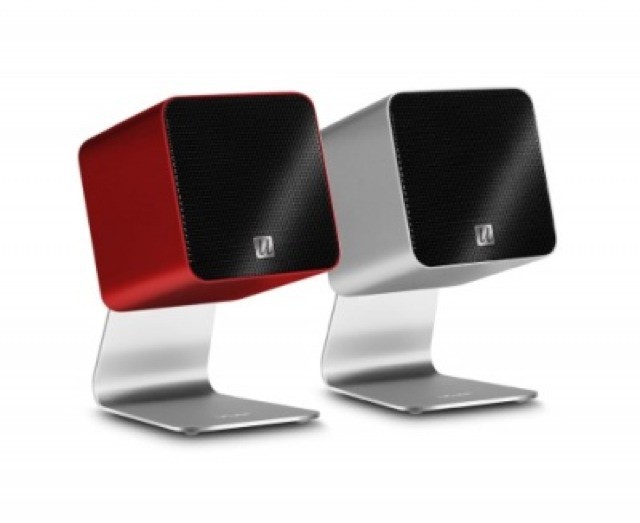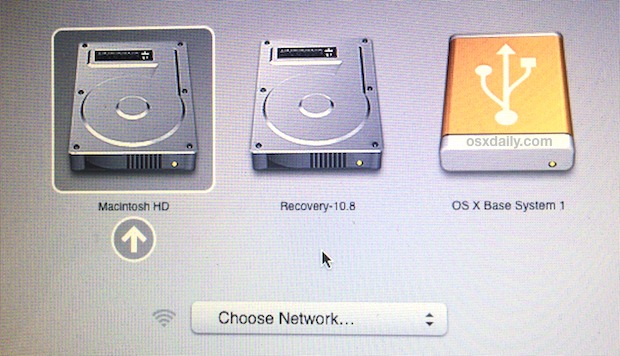CD/DVD drives are disappearing from computers, leaving USB storage as the only option when re-installing an operating system. The process is fairly painless and, if you have a bit of time and patience you can complete the task on a Mac. Boot Mac from USB Option l: Startup Manager. If your Mac won't boot up normally, you can set it to boot from a different drive, such as a USB stick containing macOS installation files in bootable format. The drive will have to contain a version of the OS that is compatible with the Mac. As long as you have the bootable installation USB, you can. Boot Camp Assistant helps you install Windows on your Intel-based Mac. The installation process depends on your Mac model. You might need a USB drive.
You set your Mac or Macbook which disk to start up from when more than one startup disk is connected. This works for USB drives including the NinjaStik
For 2018 to 2020 Macs with the Secure Boot T2 Chip, see the 2020 Macbook Pro Boot from USB instructions.
A “startup disk” is a volume or partition of a drive that contains a bootable operating system.

You can set your Mac to automatically use a specific startup volume, or you can temporarily override this choice at startup.
- From the Apple menu choose System Preferences.
- Click the Startup Disk icon in System Preferences, or choose View > Startup Disk.
- Select your startup disk from the list of available volumes.
The next time you start up or restart your computer, your Mac starts up using the operating system on the selected volume.
Temporarily change your startup disk with Startup Manager

Startup Manager allows you to pick a volume to start from while the computer is starting up.

Use these steps to choose a startup disk with Startup Manager:
- Turn on or restart your Mac.
- Immediately press and hold the Option key. After a few seconds, the Startup Manager appears. If you don’t see the volume you want to use, wait a few moments for Startup Manager to finish scanning connected drives.
- Use your mouse or trackpad, or left and right arrow keys to select the volume you want to use.
- Double-click or press the Return key to start up your Mac from the volume you selected.
If you have an optical drive connected to your computer, you can insert an installation disc to see it in Startup Manager. You can also attach FireWire or USB external hard drives that contain an operating system to add to the list of startup volumes.
Startup Manager automatically adds bootable volumes as you connect them.
Restart in OS X from Boot Camp
If you have started up your Mac in Windows using Boot Camp, you can use the Boot Camp system tray to switch your startup disk default back to OS X.
- In Windows, click the Boot Camp icon in the system tray.
- From the menu that appears, choose Restart in OS X.
Start from OS X Recovery
You can also start your Mac from OS X Recovery or Internet Recovery if your Mac was manufactured after 2011.
To start your Mac from the Recovery System, use these steps:
- Start up or restart your computer.
- Hold down the Command and R keys on your keyboard until you see the Apple logo appear onscreen.
If you don’t see a volume listed
If you don’t see the volume you want to start your computer from, check the following:
- If you’re using an external drive, make sure it’s connected and turned on.
- Make sure you’ve installed an operating system, like OS X or Windows on the drive you’re trying to start from. Volumes that don’t contain a valid operating system aren’t listed in Startup Disk or Startup Manager.
- If you’ve installed an operating system on a drive but it isn’t listed, the volume you’re trying to start from might need repair. If the volume contains OS X, start your computer from OS X Recovery and use Disk Utility to repair the volume, or reinstall OS X on the volume using the Recovery System.
- Depending on the Mac you are using and the version of OS X that is installed, the Recovery System volume (Recovery HD) might not show up in Startup Manager. Press Command-R during startup to start your Mac from the Recovery System.
Boot With Usb Asus
For 2018 / 2019 Macbook Pro with the Secure Boot T2 Chip, see the 2018 Macbook Pro Boot from USB instructions.
(There's no video for Mac OS 9.2.2 'boot kit' for booting your G3/G4 from an USB stick yet. Please contribute to MR and add a video now!)
What is Mac OS 9.2.2 'boot kit' for booting your G3/G4 from an USB stick? Stop wasting plastic! You've been doing it wrong if you burn install CD's for your old Mac :PThis Mac OS 9.2.2 'boot kit' was made by @that-ben and makes the process of booting (and installing) Mac OS 9 on any G3 and most G4's from an USB stick a little bit easier, because not all the Mac OS 9 install CD images can be used to boot a Mac from an unlocked volume (such as from an USB stick or hard drive). This disk image does boot the computer into a fully useable desktop (albeit quite slow) and it's loaded with utilities and disk image mounting tools which will enable you to prepare and install Mac OS, everything without the need for a CD-ROM drive at all. Since the USB drive is unlocked, you can even surf the web using the pre-installed Classilla browser and go get more files, directly from the same computer you're about to install Mac OS on :P There is no Mac OS installer on this disk image. You still have to download a Mac OS install CD ISO of your choice (Mac OS 9.2.2 Universal 2002 edition is highly suggested unless you know and want to use your machine specific Mac OS install CD) in order to install it on your Mac. Follow these steps to clone this disk image onto an USB stick and follow the link at the bottom of that article to learn how to boot G3's and G4's from an USB stick using Open Firmware. Once the Mac is booted off of the USB stick, what I would do is: 1) Copy anything from the internal hard drive that's worth keeping onto an USB stick or external drive and then format the internal hard drive as HFS Extended using the Drive Setup found under the Applications folder on the USB stick. 2) Use another USB stick (formated as FAT32 if your main computer is a Windows PC or HFS Extended if it's under Mac OS X) or the network to copy your Mac OS install CD image onto that Mac's internal hard drive. 3) Lock that Mac OS install disk image (click on it to select it, then under the menu at the top: File > Get Info, then check the Locked attribute on the bottom/left corner). 4) Use the pre-loaded Toast 5 Titanium to mount the Mac OS install CD image (locked). 5) Launch the installer and enjoy your freshly installed Mac! No CD, no pollution. Pre-loaded software installed on the USB stick that you can use when booting off of it include:
Mac OS 9.2.2 Boot Kit.zip(164.02 MiB / 171.99 MB) Mac OS 9.2.2 Boot Kit / Toast (ISO) image / Zipped 1713 / 2019-02-12 / 3772eaedf5a1528c88d0a65252eb1333668b35c1 / / Architecture
Architecture: PPC Use this to boot any G3 and most G4's into a fully useable Mac OS 9.2.2 desktop from an USB stick, pre-loaded with all the tools you need to prepare and install Mac OS 9 on your PowerPC Mac. This could also be used to boot the QEMU emulator if you wanted. Emulating this? It should run fine under: SheepShaver |
Boot Mac With Usb Drive
